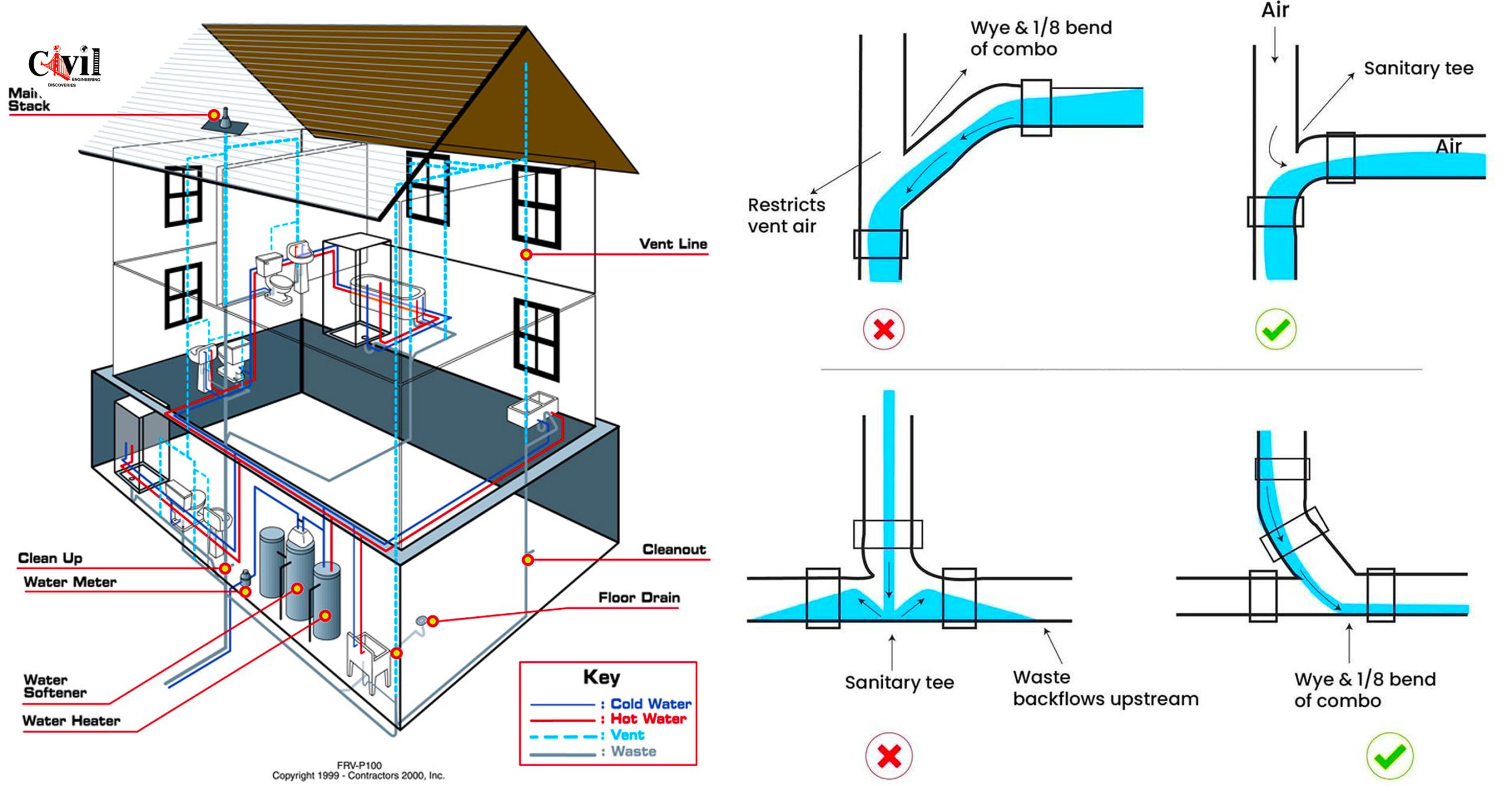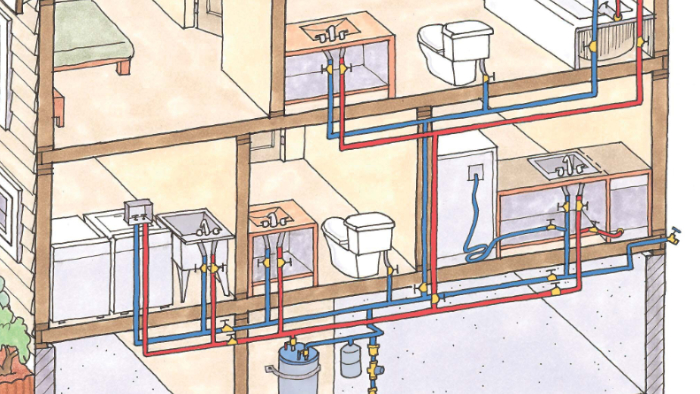Just how do you really feel in relation to Plumbing Installation 101: All You Need to Know?

Comprehending how your home's plumbing system functions is essential for each house owner. From delivering clean water for alcohol consumption, cooking, and showering to securely removing wastewater, a well-kept plumbing system is vital for your family members's health and comfort. In this detailed overview, we'll discover the intricate network that comprises your home's plumbing and offer tips on upkeep, upgrades, and dealing with common issues.
Introduction
Your home's pipes system is greater than simply a network of pipes; it's a complex system that ensures you have access to clean water and reliable wastewater elimination. Understanding its parts and how they collaborate can help you prevent costly repair work and make sure every little thing runs smoothly.
Fundamental Elements of a Pipes System
Pipelines and Tubes
At the heart of your pipes system are the pipes and tubing that carry water throughout your home. These can be constructed from various materials such as copper, PVC, or PEX, each with its advantages in terms of sturdiness and cost-effectiveness.
Fixtures: Sinks, Toilets, Showers, etc.
Fixtures like sinks, toilets, showers, and bathtubs are where water is used in your house. Understanding just how these components link to the pipes system helps in identifying troubles and intending upgrades.
Valves and Shut-off Points
Valves control the flow of water in your plumbing system. Shut-off shutoffs are crucial during emergency situations or when you require to make fixings, enabling you to separate parts of the system without interrupting water flow to the entire house.
Water Supply System
Key Water Line
The primary water line connects your home to the municipal water supply or a personal well. It's where water enters your home and is distributed to numerous components.
Water Meter and Pressure Regulatory Authority
The water meter procedures your water use, while a stress regulatory authority makes sure that water flows at a safe stress throughout your home's pipes system, preventing damages to pipes and fixtures.
Cold Water vs. Warm water Lines
Recognizing the distinction between cold water lines, which provide water straight from the primary, and hot water lines, which bring heated water from the water heater, aids in repairing and planning for upgrades.
Drainage System
Drain Pipes Piping and Traps
Drain pipelines carry wastewater far from sinks, showers, and bathrooms to the sewer or septic system. Catches avoid sewer gases from entering your home and additionally catch particles that might cause obstructions.
Ventilation Pipelines
Ventilation pipelines enable air into the water drainage system, stopping suction that could slow down water drainage and trigger traps to vacant. Correct air flow is important for preserving the integrity of your pipes system.
Significance of Proper Drain
Guaranteeing correct drainage stops back-ups and water damage. Frequently cleansing drains and keeping traps can avoid pricey repair services and extend the life of your pipes system.
Water Furnace
Types of Hot Water Heater
Hot water heater can be tankless or traditional tank-style. Tankless heating units warm water on demand, while storage tanks store warmed water for prompt use.
Just How Water Heaters Attach to the Plumbing System
Comprehending just how water heaters attach to both the cold water supply and hot water circulation lines helps in identifying concerns like not enough hot water or leakages.
Maintenance Tips for Water Heaters
Frequently purging your hot water heater to eliminate sediment, examining the temperature settings, and checking for leakages can extend its life expectancy and boost energy effectiveness.
Typical Pipes Issues
Leaks and Their Reasons
Leakages can occur because of maturing pipelines, loosened fittings, or high water pressure. Resolving leaks quickly stops water damage and mold and mildew development.
Clogs and Blockages
Blockages in drains pipes and toilets are typically brought on by purging non-flushable products or a build-up of oil and hair. Making use of drain screens and being mindful of what decreases your drains can stop obstructions.
Signs of Plumbing Problems to Expect
Low tide pressure, slow-moving drains pipes, foul odors, or unusually high water bills are indications of prospective pipes troubles that need to be addressed promptly.
Pipes Maintenance Tips
Regular Evaluations and Checks
Schedule annual plumbing evaluations to capture problems early. Try to find indicators of leakages, deterioration, or mineral build-up in taps and showerheads.
DIY Maintenance Tasks
Basic jobs like cleansing tap aerators, looking for commode leakages making use of dye tablets, or protecting subjected pipes in chilly climates can avoid major plumbing concerns.
When to Call a Specialist Plumbing Professional
Know when a pipes concern calls for specialist know-how. Attempting complicated repair work without correct understanding can result in even more damages and greater repair service expenses.
Upgrading Your Pipes System
Reasons for Upgrading
Upgrading to water-efficient components or changing old pipelines can boost water top quality, minimize water expenses, and raise the worth of your home.
Modern Plumbing Technologies and Their Benefits
Explore modern technologies like smart leakage detectors, water-saving toilets, and energy-efficient water heaters that can conserve cash and decrease environmental influence.
Price Considerations and ROI
Compute the upfront prices versus long-lasting savings when thinking about plumbing upgrades. Several upgrades spend for themselves with reduced energy expenses and fewer fixings.
Ecological Impact and Preservation
Water-Saving Components and Appliances
Installing low-flow taps, showerheads, and bathrooms can considerably reduce water use without sacrificing efficiency.
Tips for Minimizing Water Use
Basic habits like dealing with leakages promptly, taking much shorter showers, and running full tons of washing and meals can conserve water and reduced your utility costs.
Eco-Friendly Plumbing Options
Take into consideration sustainable pipes products like bamboo for flooring, which is durable and green, or recycled glass for counter tops.
Emergency situation Preparedness
Actions to Take During a Pipes Emergency
Know where your shut-off shutoffs are located and exactly how to turn off the water system in case of a burst pipeline or significant leak.
Value of Having Emergency Calls Handy
Maintain contact info for neighborhood plumbing technicians or emergency situation solutions readily offered for quick reaction throughout a plumbing dilemma.
Do It Yourself Emergency Situation Fixes (When Appropriate).
Short-lived solutions like using air duct tape to spot a leaking pipe or putting a pail under a dripping faucet can decrease damages until an expert plumbing professional arrives.
Final thought.
Understanding the composition of your home's pipes system empowers you to preserve it properly, conserving time and money on fixings. By following routine upkeep regimens and staying notified about contemporary plumbing innovations, you can guarantee your pipes system operates effectively for many years to find.
HOW YOUR PLUMBING SYSTEM WORKS
Which Pipes Do What?
Blue lines = fresh water supply entering the building
Red lines = hot water supply entering the building
Grey lines = pipes carrying waste away from the building and venting pipes carrying gases away from the building (through the roof)
YOUR MAIN PLUMBING SYSTEMS
There are two main plumbing systems that support your home s basic plumbing needs one that brings clean water into your home, and one that sends dirty water away from your home. Connected to the toilet, bath, shower, and other faucets in your home, these two systems keep your water flowing in the right directions.
ACCESSING FRESH WATER
Fresh and clean water is brought into your home through the main water supply line . Filtered through one pipe, this water is pressured to flow into the various fixtures in your home at any given time.
This water can be sourced from a well located on your property, a pond or river (mostly cottages), or, as in most cases, from the city s municipal water treatment centre. However, it is important to note that water that is untreated, such as the water siphoned from ponds or rivers, may not be safe to drink. Personal water supplies always need to be treated for hardness and contaminants before consumed.
MUNICIPAL WATER SUPPLIES
Improve taste and odour
Remove sediment
Eliminate hardness
Reduce chlorine
COLD WATER SUPPLY VS. HOT WATER SUPPLY
Cold water flows into your home or building through the service line, which then distributes hot or cold water to your fixtures. This line is most commonly run through a central column that runs floor to floor. Hot water runs in short and straight pipes as the longer the pipeline, the more heat that will be lost in the transfer. Having shorter pipes also allows residents to access hot water more quickly.
WASTE WATER SYSTEM
Your wastewater system is divided into two parts pipes that send wastewater away from your home and venting pipes that send sewer gas away from your home. Sewage water travels through pipes that flush the water and waste towards local sewers that are operated and managed by your city or town. Most sewer systems rely on gravity to move the wastewater to where it needs to go.
The further away from your toilet or sink, the larger wastewater pipes become. This allows for waste to be disposed of from various parts of your home or business at once without pipe blockages. The angle and flow of these pipes are also essential for keeping your waste pipes clear of build up.
https://harrisplumbing.ca/how-your-home-plumbing-system-works/

HOW YOUR PLUMBING SYSTEM WORKS
Which Pipes Do What?
YOUR MAIN PLUMBING SYSTEMS
There are two main plumbing systems that support your home s basic plumbing needs one that brings clean water into your home, and one that sends dirty water away from your home. Connected to the toilet, bath, shower, and other faucets in your home, these two systems keep your water flowing in the right directions.
ACCESSING FRESH WATER
Fresh and clean water is brought into your home through the main water supply line . Filtered through one pipe, this water is pressured to flow into the various fixtures in your home at any given time.
This water can be sourced from a well located on your property, a pond or river (mostly cottages), or, as in most cases, from the city s municipal water treatment centre. However, it is important to note that water that is untreated, such as the water siphoned from ponds or rivers, may not be safe to drink. Personal water supplies always need to be treated for hardness and contaminants before consumed.
MUNICIPAL WATER SUPPLIES
COLD WATER SUPPLY VS. HOT WATER SUPPLY
Cold water flows into your home or building through the service line, which then distributes hot or cold water to your fixtures. This line is most commonly run through a central column that runs floor to floor. Hot water runs in short and straight pipes as the longer the pipeline, the more heat that will be lost in the transfer. Having shorter pipes also allows residents to access hot water more quickly.
WASTE WATER SYSTEM
Your wastewater system is divided into two parts pipes that send wastewater away from your home and venting pipes that send sewer gas away from your home. Sewage water travels through pipes that flush the water and waste towards local sewers that are operated and managed by your city or town. Most sewer systems rely on gravity to move the wastewater to where it needs to go.
The further away from your toilet or sink, the larger wastewater pipes become. This allows for waste to be disposed of from various parts of your home or business at once without pipe blockages. The angle and flow of these pipes are also essential for keeping your waste pipes clear of build up.
https://harrisplumbing.ca/how-your-home-plumbing-system-works/
We were introduced to that article about Anatomy of a House: Understanding the Components through a pal on another domain. Loved our posting? Please quickly share it. Let someone else discover it. We thank you for reading our article about Plumbing Installation 101: All You Need to Know.
Details